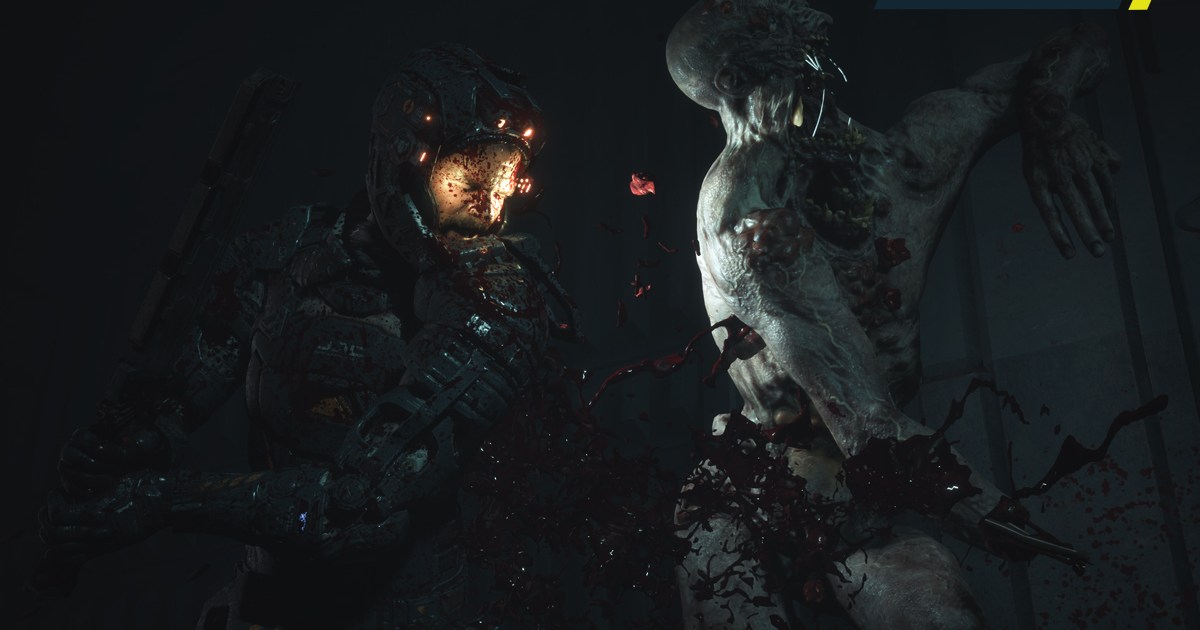Dead Space left off on a sour note, one with a pungent aftertaste that has lingered for almost a full decade. The Callisto Protocol seemed designed to finally override that nasty aroma with its own approach to the genre, as it was unambiguously inspired by that series and from some of the same creatives. Instead of being a thoughtful successor worthy of carrying the torch, The Callisto Protocol is a bafflingly misguided horror game that’s hopelessly lost in space.
The Callisto Protocol looks so much like Dead Space that it’s difficult to grasp how it could fail so spectacularly, but almost all its many shortcomings are nestled beneath the surface. The combat is the most obvious example of this, as it looks interesting from a distance but lacks most of the strategy and the carefully crafted controls its spiritual forebear.
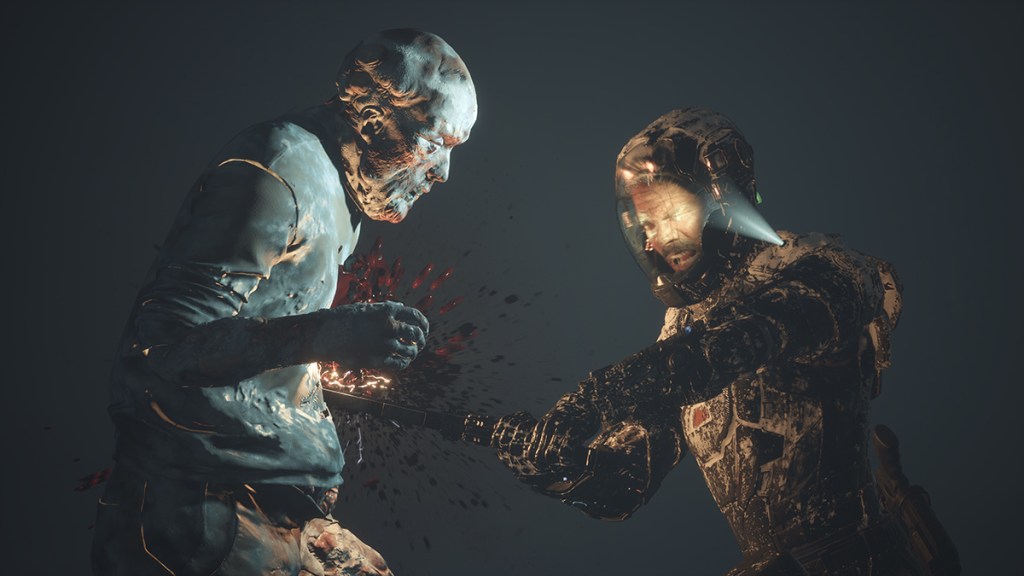
It is predominantly a melee-based game where guns don’t play as vital of a role, particularly in the first half. Much like protagonist Jason Lee’s stun baton, the close-quarters combat is blunt and inaccurate. Going toe-to-mutated-toe against these repulsive monsters plays out a little like a boxing match where players have to duck, weave, and strike accordingly.
While unique, it’s extremely repetitive because the controls are too simple and don’t allow for much variation. Almost every single enemy swings once or twice and then is open for a counterattack, which is an easily exploitable loop that hardly changes throughout the game. The heavy strike is too slow to be of any use and parrying doesn’t absorb all damage, meaning the default swing is the only useful choice. With the inability to target specific body parts and its scarce handful of options, The Callisto Protocol’s physical combat is hollow and a far cry from Dead Space’s endlessly rewarding strategic dismemberment.
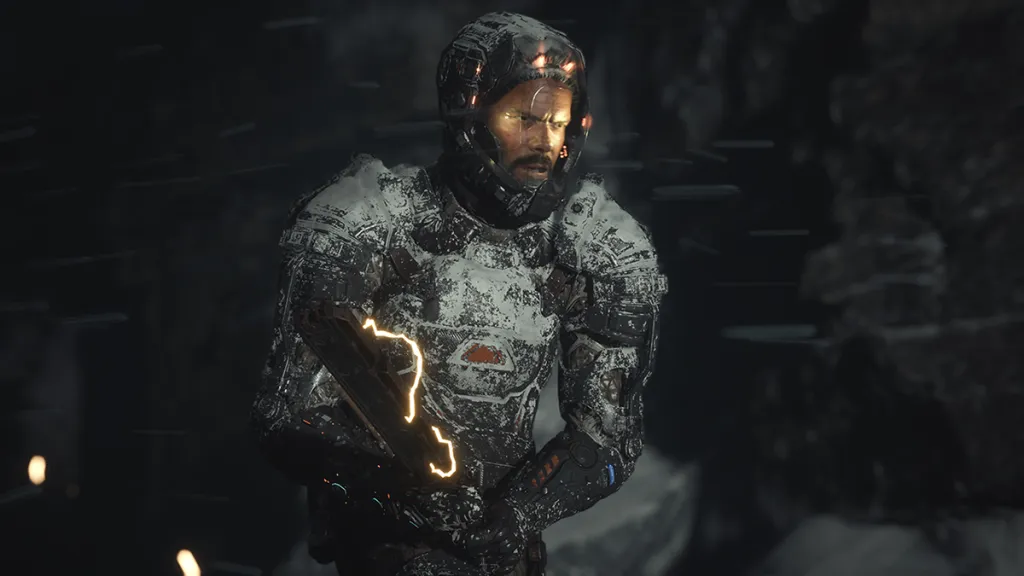
Lacking precision and depth is a big fundamental problem that’s worsened when combined with its numerous smaller grievances. Even the weakest grunts can randomly tank through standard and heavy blows, which is an unfair and frustrating way to get players not to mash buttons, especially since these armored moves aren’t telegraphed. Evading just sometimes doesn’t work and it’s too easy to take full damage after a successful sidestep because of how finicky the input is. Successful jukes might even hamper the player since the camera can wig out and make it hard to refocus on the most immediate threat. Perfect dodges can alleviate this, but the window is ludicrously narrow. So while enemies behave predictably, the game almost always pulls some trick to artificially balance the scales.
All of these irritating drawbacks mean it is impossible to be fully immersed in its gorgeously rendered world. Having to contend with a never-ending string of nuisances is counterintuitive for the horror genre that thrives on immersion. Horror without immersion is just being annoyed in the dark.
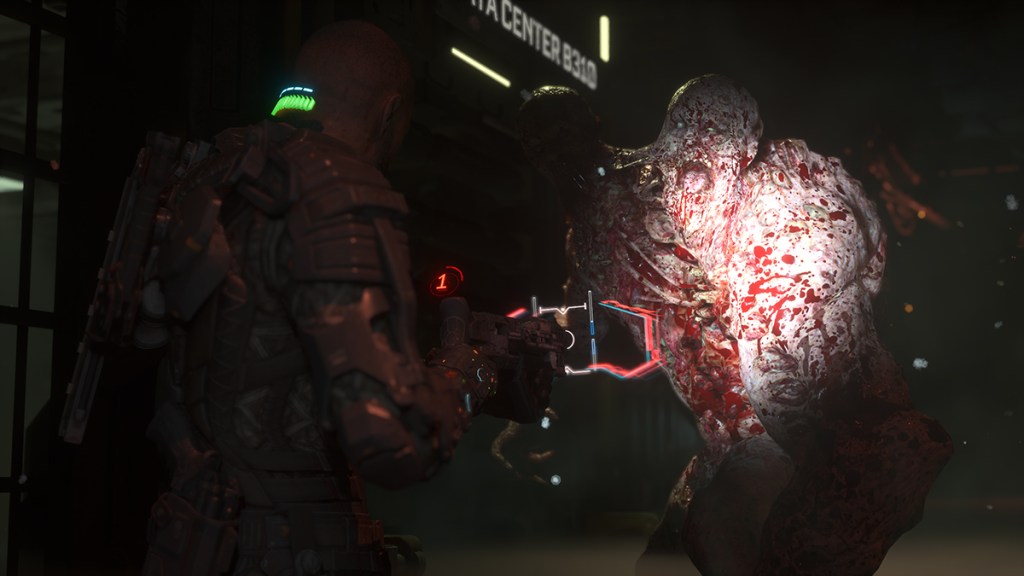
It doesn’t necessarily have to be scary if the action is sound, but the action doesn’t hold up even when separated from its weak melee mechanics. The Biophage enemies are appropriately gross, yet most aren’t distinct enough to make for a well-rounded bestiary, as it often just cycles in basic grunts. The two Biophages that sit on the extremes are aggravating in their own ways, as well. Its small leeches are recklessly overused for cheap and ineffective jump scares, and its two-headed elites just spam the same one-hit kill move in cramped environments and highlight the inadequate controls.
Its stilted enemy design can be best summed up in its blind variant that pulls from the Lickers and Clickers seen in Resident Evil and The Last of Us, respectively. The Callisto Protocol builds them up to be a huge threat, but they’re poor hunters that don’t have any notable strengths. They don’t even have strong hearing or echolocation to make up for their obvious weakness. Tiptoeing around and stealth killing them is tedious and shockingly easy, turning potentially powerful beasts into little more than slimy, toothy irritants.
Gunplay is somewhat better, but it still can’t salvage the gameplay. The swimmy reticle and cumbersome weapon switching mean the act of aiming is a bit of a chore, and these are lousy ways to derive tension. Shooting is also less tactical since there’s little incentive to blast off certain limbs outside of random tentacles that can cause mutations; a novel addition that would have been a better central focus despite how easy they are to shoot off.
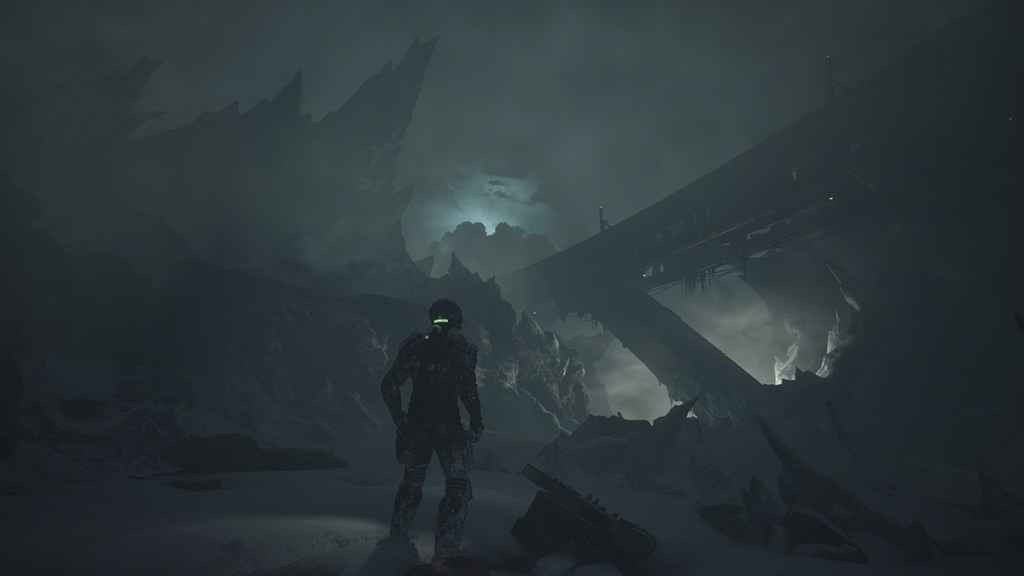
But its problems aren’t strictly mechanical, as it is filled with other puzzling decisions that make it all feel even more unpolished. Executions often cause the camera to clip through the floor, masking whatever gruesome fatality is being performed (if the two models line up in the first place). Enemies can also clip through the walls at random and are temporarily impossible to shoot. Audio logs can’t be played outside of the menu, so it’s difficult to want to stop and listen to them. Obvious mission objectives and tutorials are plainly plastered on the screen in ways that seemingly go against the clean, more minimalist presentation it begs for. It’s not a buggy game, but it is filled with odd oversights that further diminish the experience little by little.
All of this is jarring because of how beautiful The Callisto Protocol is. Character models are impressively detailed and noticeably drenched in a proper amount of sweat, while the Biophages are as meticulously constructed with enough veins, pustules, and tentacles to reinforce how truly disgusting they are. Lighting is the undisputed star here because its use of ray tracing allows the game to more accurately cast shadows and bounce light around in ways that lead to more believable environments and lifelike characters. It’s subtle — particularly in how it applies to skin translucency — but it’s prevalent enough to considerably improve the overall visual presentation and fit the horror genre it otherwise stumbles within.
Even though the characters look fantastic, the tale they tell is stilted and poorly paced. The Callisto Protocol is hardly concerned with anything more than the very basic story of escaping for a vast amount of its runtime, leaving the larger questions about the outbreak for the very end. Instead of dropping bread crumbs about the bigger picture evenly throughout the game, it info dumps giant bread loaves of backstory in the last hour. The answers are a little ridiculous and not hard to deduce, but they likely would have been easier to accept if Striking Distance Studios hadn’t waited so long to actually begin doling everything out.
With such a rushed story and sloppy mechanics, The Callisto Protocol betrays the legacy it was built upon. The ingenuity of a melee-focused action horror game doesn’t override its faulty controls and repetitive nature in the same way its dazzling visuals can’t conceal how empty it all is at its core. These ever-present sins not only make for a bad game, but one that also runs counter to what made Dead Space such a classic. The Callisto Protocol does at least try to break away from that series and forge a new identity. It was successful in some regard since it isn’t a mere clone of Dead Space as it would be a much better game if that were the case.
SCORE: 4.5/10
As ComingSoon’s review policy explains, a score of 4.5 equates to “Poor.” The negatives overweigh the positive aspects making it a struggle to get through.
Disclosure: The publisher provided a PlayStation 5 copy for our The Callisto Protocol review. Reviewed on version 1.006.000.
